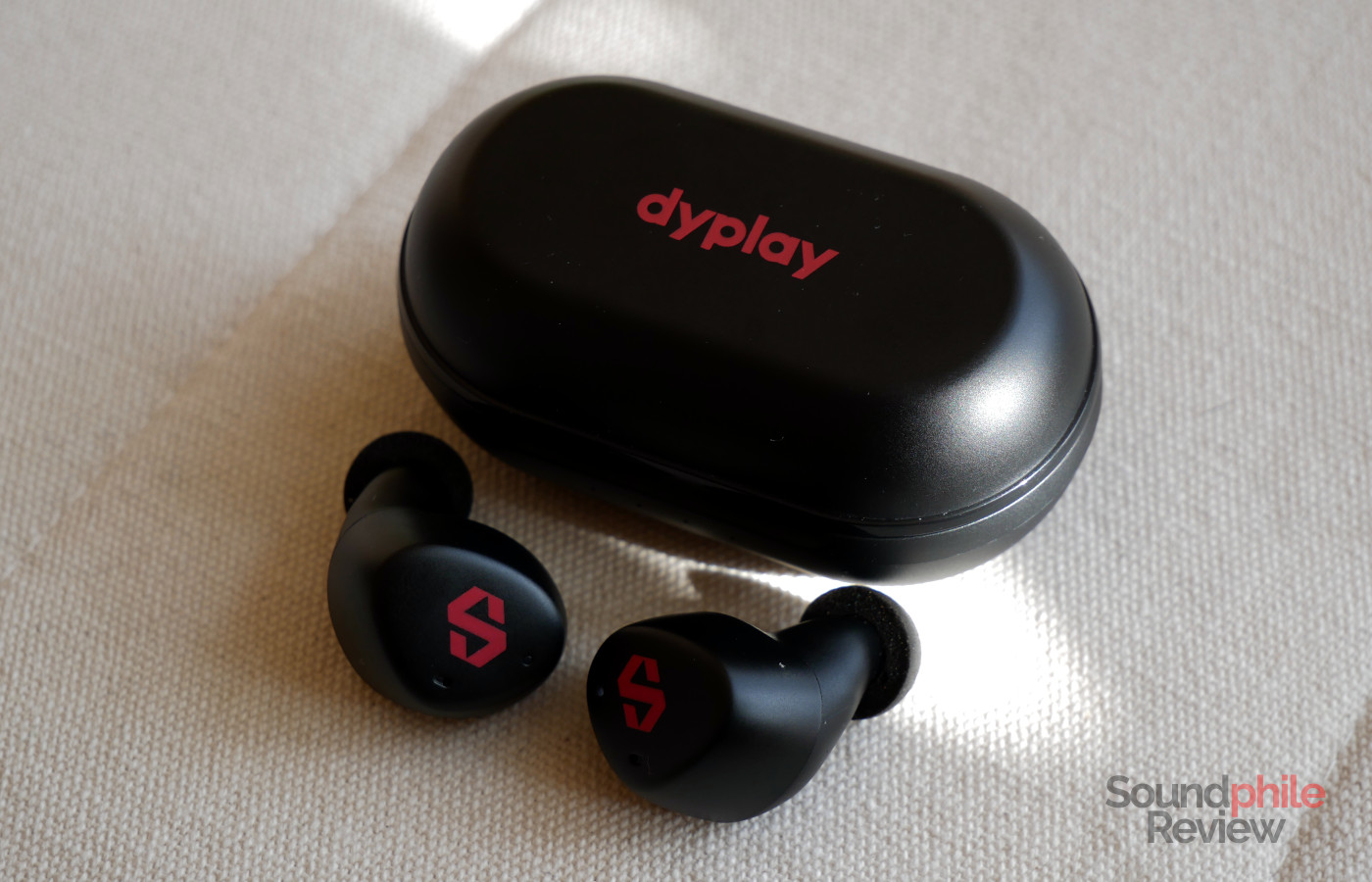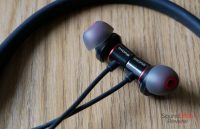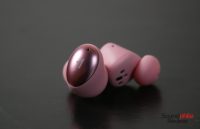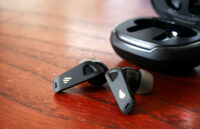ANC, also known in its full form as active noise cancelling, is taking over the headphone world by moving further down in the price range. Once exclusive to high-end models, it has now expanded to cover even entry-level units. And the interesting bit of this matter is that it often works quite well! Ah, the joys of technology advancement. The dyplay Shield Pro ANC are part of the latest wave of products that feature ANC while keeping the price affordable and also offering good sound quality.
Disclaimer: I received a complimentary sample from dyplay (thank you, Lin). The earphones retail for ~$90. You can also find them on Amazon UK and on the manufacturer’s website.
TL;DR: recap
| Pros |
Cons |
| Small case
Great connection range ANC works quite well Balanced, well-done tuning Good technical ability No background hiss! Very good battery life |
ANC does not cope well with sudden noises
Playback stutters with AAC |
Rating: 8/10
Packaging & Accessories
You can easily tell that packaging is not where a good chunk of the money went, but I’m all for this kind of approach (because it means the money you pay goes towards the earphones and hopefully the sound quality). Inside the cardboard box are the earphones in their case, a USB to USB-C cable and two sets of eartips: one is in silicone (and comes in three sizes), while the other is made of foam (again in three sizes). It’s quite unusual to see foam eartips with “true wireless” earphones, and even more so at this price point. I’m personally all in favour of foam eartips, as they afford you a much better isolation and comfort.
Design & Comfort
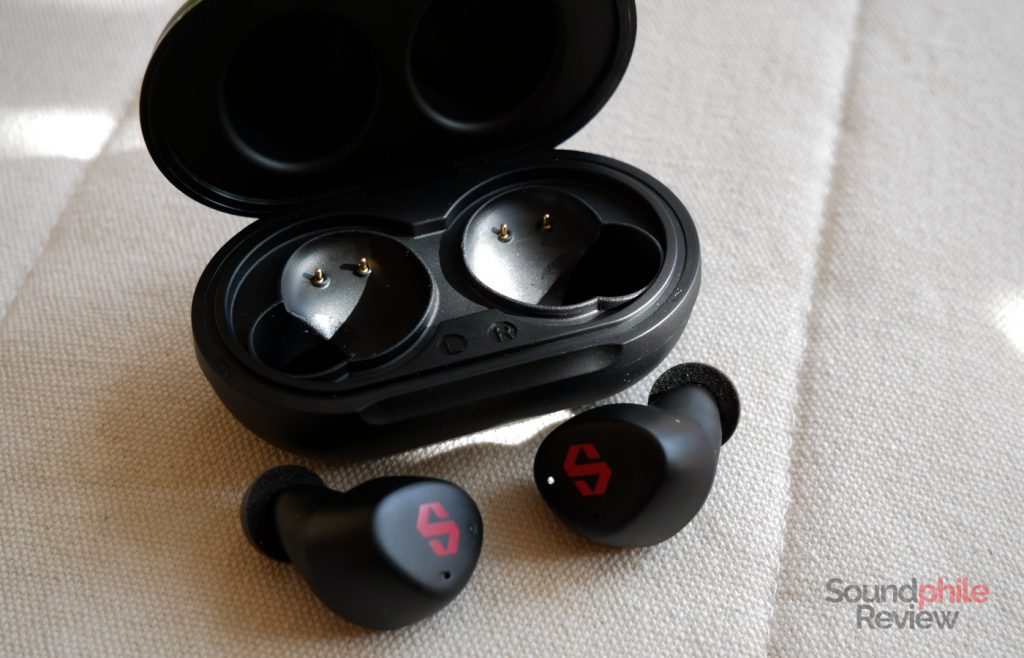
In terms of design the dyplay are not that innovative, but at the same time they bring an unusual design to the table. It’s markedly triangular, which is not that common, with the usual IEM shape that makes them appear flush with your ears; in my case they bulge out for less than 5 mm, which means I can actually lay on a pillow and not feel them. The earphones are black in colour, with the dyplay logo in dark orange. There are a hole (for the microphone) and a status LED on the faceplate, while opposite that, above the nozzle, are two pins to charge the earphones.
Build quality is quite good, although the plastic doesn’t feel exactly premium. Despite dropping them a few times, I haven’t been able to scratch or damage them (thankfully), which is a good indication of how resistant these earphones are to wear & tear.
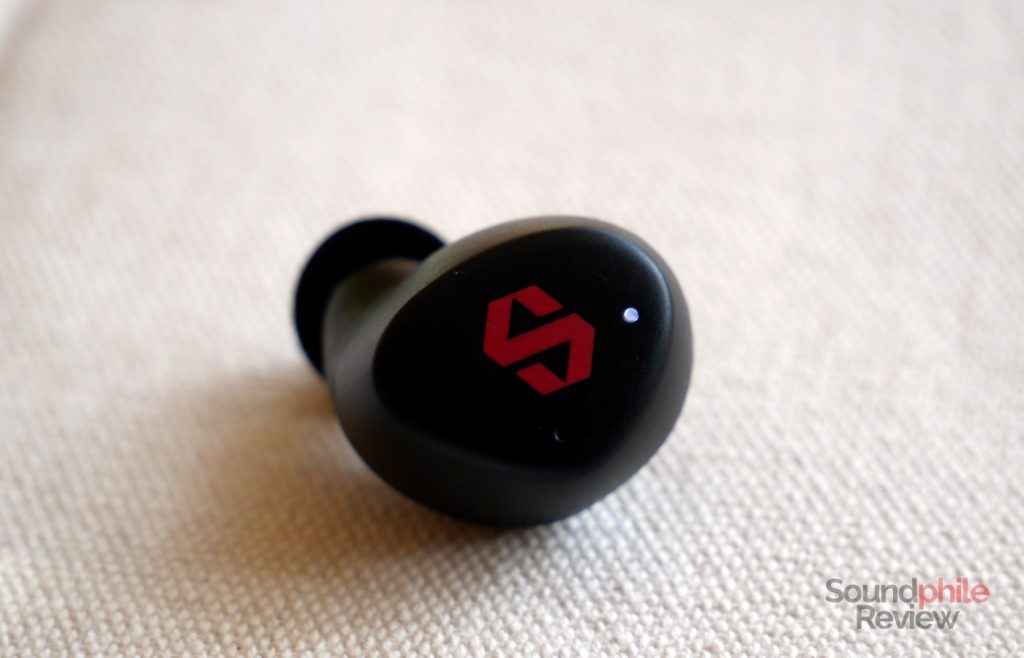
The dyplay Shield Pro ANC offer IPX4 certification, so you can wear them even under the shower or when you are doing physical exercise.
Despite the relatively large size, I found the Shield Pro ANC to be absolutely comfortable, mostly thanks to their curved shapes. They’re so comfortable I can wear them until the battery is completely empty, so around 5 hours, and feel a slight discomfort. That’s quite a good achievement and although your ears will probably be different from mine, there’s a good chance you will find the Shield Pro ANC equally comfortable as they have a fairly universal shape.
I would say that passive isolation is average, as it can reduce outside noise somewhat but it won’t block it straight away. There’s enough isolation for the ANC to work quite well, though, with the two working in tandem to remove noise effectively. Even without enabling ANC most noise is removed from quiet environments (most homes and offices), while more noisy situations require ANC.
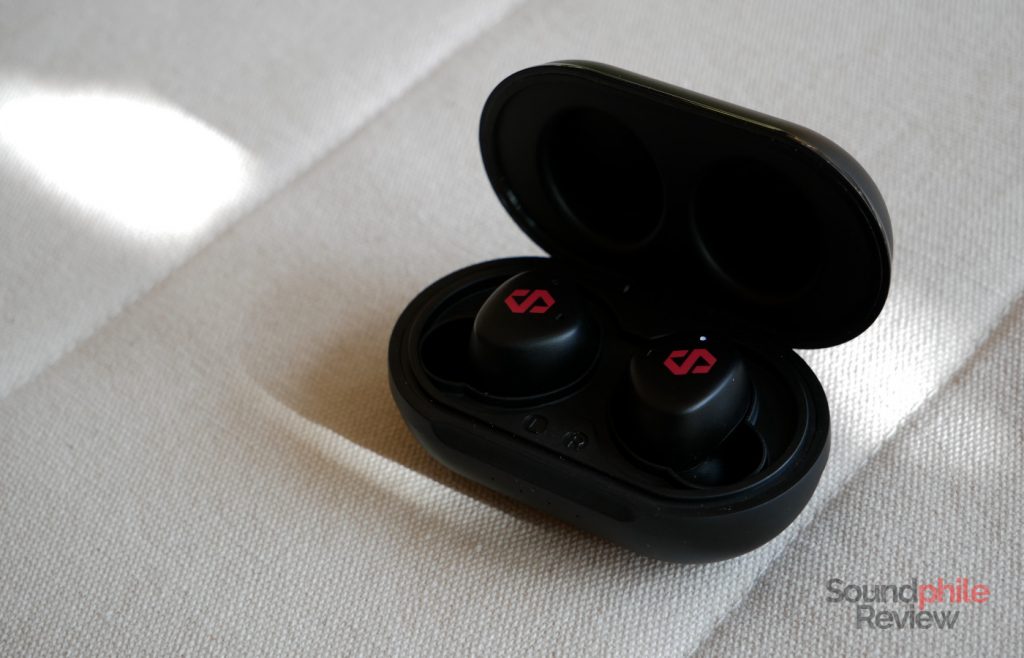
The case is very small and light, so much so that it fits in my pockets together with my DAP; it’s true that I have men’s trousers that notoriously have quite large pockets, so girls and women among readers might find it more difficult to do that (until the day clothes manufacturers finally decide to make decent-sized pockets for you as well. I truly support this cause). The plastic is the same used for the earphones. Build quality is quite high and a good indication of this is that the lid does not move laterally. There is a USB-C port for charging.
Extra Features & Battery Life
Like many earphones that are not engineered towards pure sound quality, the dyplay Shield Pro ANC offer only two codecs: SBC and AAC. The latter offers a good enough quality, but is not available on all devices and is most often found on Apple devices. The earphones use Bluetooth 5, so low latency is embedded into the protocol and films and even games are enjoyable as there’s no noticeable lag.
I found that the connection has a superb range that’s higher than most other “true wireless” earphones I’ve tried. The stability is not quite there though, as there are often micro-stutters that keep on interrupting the music – it’s as if there was a constant play-and-pause. I first noticed this while on a plane listening to Portico Quartet’s Too Many Cooks – the sound of the hang had constant interruptions. At first I would have ascribed it to the plane being full of people who were using Bluetooth headphones, but then it happened on other occasions as well and the issue was that the earphones were using AAC. When using SBC there was no problem at all, which would indicate a difficulty on the Shield Pro ANC’s part to keep a stable connection when the higher bitrate codec is used.
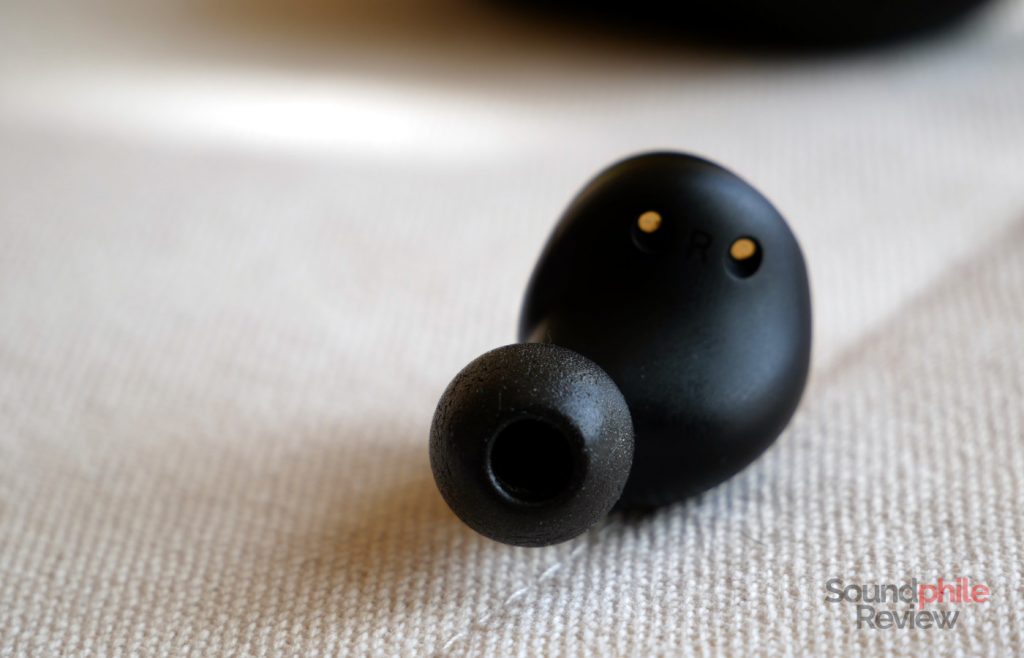
The faceplates on both earpieces are sensitive to touch and offer a set of commands to control the various features and the playback:
- one touch on the right plays or pause music, answers calls or hangs up;
- two touches on the right increase volume;
- a long press either skips to next song or rejects the call;
- one touch on the left cycles through ANC, transparent mode and normal mode, plus it answers calls and hangs up;
- two touches on the left decrease volume;
- a long press rejects the call or goes to the previous song;
- three touches on both earpieces invoke the voice assistant in case the earphones are paired with a smartphone.
It’s a complete, simple and effective set of commands that’s quite intuitive. dyplay really got this aspect right. The touch controls are quite responsive and I rarely issue the wrong command, even when I am in a hurry or not really paying attention. There also seems to be some kind of palm rejection at work because playback does not pause if I take my right earbud out and accidentally touch its faceplate, which I appreciate.
The dyplay Shield Pro ANC use hybrid feeding for the noise cancellation as enabling doesn’t cause bass to drastically decrease in the music being reproduced, which is usually a telltale sign of the usage of the feed-forward technique. The hybrid implementation used works much better than I honestly expected. Let’s face it: ANC is often bad (if not very bad) in low-budget earphones. This is not true for the Shield Pro ANC, though, as it effectively removes a huge chunk of noise; as a practical example, the roar of aeroplane engines is reduced to little more than a whisper. It’s still there, yes, but the volume is so low that you barely notice it. It’s a bit less than what I can achieve by closing my ears with my fingers.
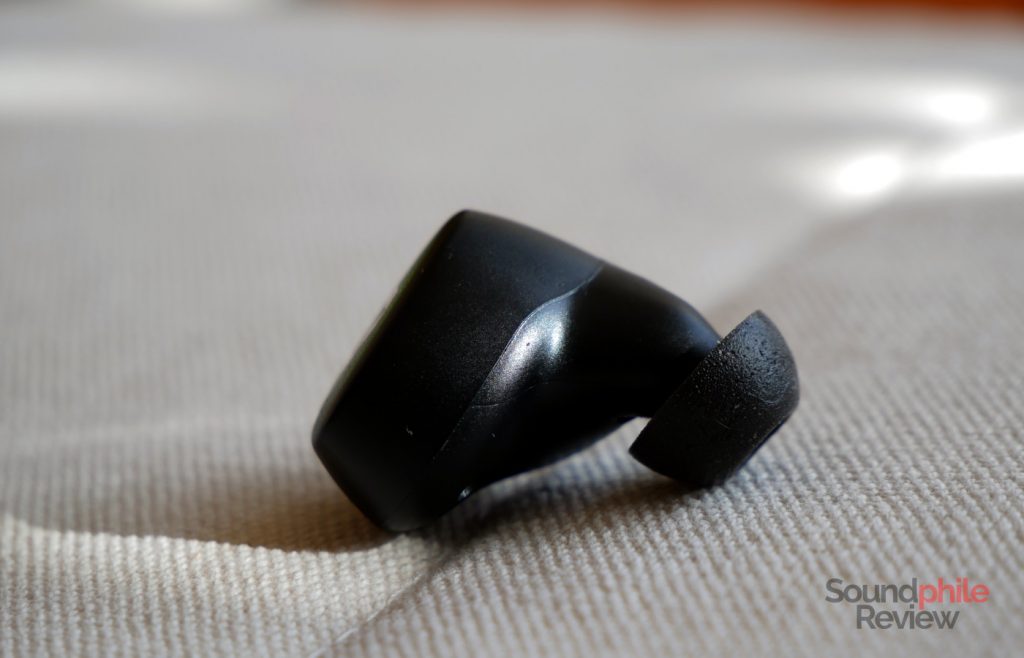
One issue I found is that sudden noises, as well as movement around the earbuds, make the ANC stop working. Things like the airplane landing or a hand waved near the earbuds interrupt the ANC for about five seconds, with a gradual return of the functionality. This makes the ANC less useful on public transport, as an example, where sudden loud noises are quite common (e.g. doors opening and closing). Overall the implementation of ANC is very good, but inferior to the top models in terms of consistency.
These issues with connectivity and ANC are not normal according to dyplay and they told me they offer after-sales customer services for any units that display them (probably by replacing those units). I am reporting my experience anyway to be 100% transparent with you.
On top of the noise cancellation there is also a “transparent mode” which basically captures sounds from outside with the microphones and plays them in the earphones, so you can actually hear what’s around you perfectly well without having to take your earphones off. That’s quite handy if you are in a place with public announcements (e.g. airports, stations) or if you want to talk to someone.
With noise cancelling turned on, the Shield Pro ANC offer around four and a half hours (stretching towards five) of battery life; with ANC off, they are able to play music for more than six hours. That’s less than the advertised eight hours, but still a good figure. One thing I noticed about battery life is that the battery of the case keeps on draining even if you don’t use the earphones, so in the course of a week the level of the charge went down by ~25%. The case is able to recharge the earphones for about three times, which is in fact in line with what the manufacturer promises.
Sound & Specs
I tested the dyplay ANC Shield Pro using my Shanling M2X player. Most of the files I had on it were FLACs ripped from CDs and therefore in 16 bit, 44.1 kHz format.
dyplay Shield Pro ANC |
| Frequency response | 20 – 20,000 Hz |
| Impedance | N/A |
| Sensitivity | N/A |
| Bluetooth version | 5.0 |
| Codecs | SBC, AAC |
In my experience budget “true wireless” earphones are not that great at cancelling noise, plus they’re not great at providing the listener with a sound signature without glaring issues. You can then imagine my surprise when I realised that the Shield Pro ANC offer a decently balanced signature that’s U-shaped, but in a gentle and well-done way. They’re also interesting from a technical perspective, which is even more (positively) puzzling!
When I say that, I mean that soundstage is relatively wide for closed-back earphones, with sounds that appear to come from outside your ears instead of from inside them. It’s not as wide as to sound like open-back headphones, nor really deep, but it exceeds my expectations from TWS earphones. Imaging is not as good: even though it is more than passable, its accuracy is limited as shown by tracks such as Azymuth’s Jazz Carnival where bells go from one channel to the other and they should do so continuously and with precise locations, but instead appear to just shift from left to right and vice-versa without you being able to pinpoint exact locations. Instrument separation is quite good, with even moderately complex and layered tracks that appear quite clear and clean.
I find the bass depth astonishing, considering the size of the driver and the “true wireless” nature of the earphones. In Portishead’s It Could Be Sweet bass is punchy and deep, hitting with strength but without becoming overwhelming. It’s probably somewhat north of neutrality, in a way that adds fun but does not leave the rest in the background. I really like how detailed the bass is, although it could use some additional speed: it is in fact decent in that regard, but transients are not clear-cut and well-defined, instead being a bit blunted. Probably due to the materials the driver is built with (PEEK and PU), there’s not much physicality in the bass produced by the Shield Pro ANC.
Voices sound pleasing and very natural (for lack of a better word, even though I don’t really like using it!): there’s no sibilance, as one can hear in Enya’s Anywhere Is, and both female and male vocals are well-balanced and in the right place of the mix. In general there’s a good tonal balance, with a bit of warmth as a consequence of bass being emphasised, and mids are well-placed in the overall mix as they are mostly in line with the rest of the scene. Detail is quite surprising, as there are even some minor details that emerge from the mix clearly.
Treble is possibly the weakest link of the chain, mostly due to how well-done lows and mids are. Highs are in fact presented with enough detail and extension to be in the average range of the sub-$100 price tier, but the rest is above the average so here’s where the “problem” lies. Treble has a sufficient level of detail to make cymbal splashes sound as a stick hitting a cymbal (which is not really a given, considering how often they sound as a mash of high-pitched sounds). There are no micro-details though. There’s enough sense of air and openness for treble to counterbalance bass effectively, but extension is limited and this shows in the depth of sounds.
dyplay Shield Pro ANC Comparisons
Here’s a brief comparison with a selection of similarly-prices “true wireless” earphones:
- dyplay Shield Pro ANC vs 1More True Wireless ANC: while the 1More and the dyplay have the ANC feature in common, that’s just about the only thing. The True Wireless ANC offer a much more fatiguing signature, with a large emphasis on treble that becomes really tiring really soon. Basically everything else is obliterated by the treble, which means that the tuning of the Shield Pro ANC, however imperfect, wins hands down. The dyplay also win in terms of technical ability, as they offer a wider soundstage, better imaging and better instrument separation. The Shield Pro ANC also win with their ANC implementation, which is more effective than 1More’s – possibly because the good ANC tech is also aided by the passive isolation.
- dyplay Shield Pro ANC vs Lypertek Tevi: beating the Lypertek Tevi is not an easy task, given they’re among the best-sounding TWS earphones out there. The Tevi do not have the same bass depth or emphasis as the Shield Pro ANC, but they have more speed, more detail and more physicality on their side. Midrange is more balanced and better highlighted, which makes it more enjoyable; it also offers much more detail and better speed. Treble is more detailed and more extended, which makes it richer and more nuanced. Soundstage is wider on the Tevi, as are imaging and especially instrument separation.
- dyplay Shield Pro ANC vs RHA TrueConnect: the biggest difference between the TrueConnect and the Shield Pro ANC is surely the lack of ANC on the RHA. The differences are not limited to this, though, as the sound is quite dissimilar. The TrueConnect offer deeper, more physical bass that involves you more but that is also more emphasised, leading to sound as a whole being slightly darker; it is also faster and more detailed, with more varied nuances. Midrange is more recessed and distant on the TrueConnect, especially in the middle region, but on the other hand it’s also somewhat more detailed, faster and more physical. Treble is slightly more emphasised, but more importantly it’s more detailed on the RHA, with more details coming out of the mix clearly. Soundstage is larger on the Shield Pro ANC, which also have the upper hand when it comes to imaging (which is closer to that of wired earphones), while the TrueConnect win in instrument separation ability.
Final Thoughts
When I started trying the dyplay Shield Pro ANC I did not expect them to be much: they seemed like the umpteenth model from a no-name manufacturer from China and without much to offer apart from an enticing price, like countless others. That was fortunately not the case, as the Shield Pro ANC actually offer a great set of features and a sound that frankly surprised me. The ANC works quite well, the touch controls are intuitive and well-implemented, the sound signature is likeable yet it does not stray too far from a balanced tuning, battery life is very good considering the inclusion of ANC tech. Overall there’s little not to like about the dyplay Shield Pro ANC. They are awarded a recommendation for TWS ANC earphones under $100!

